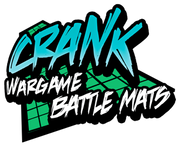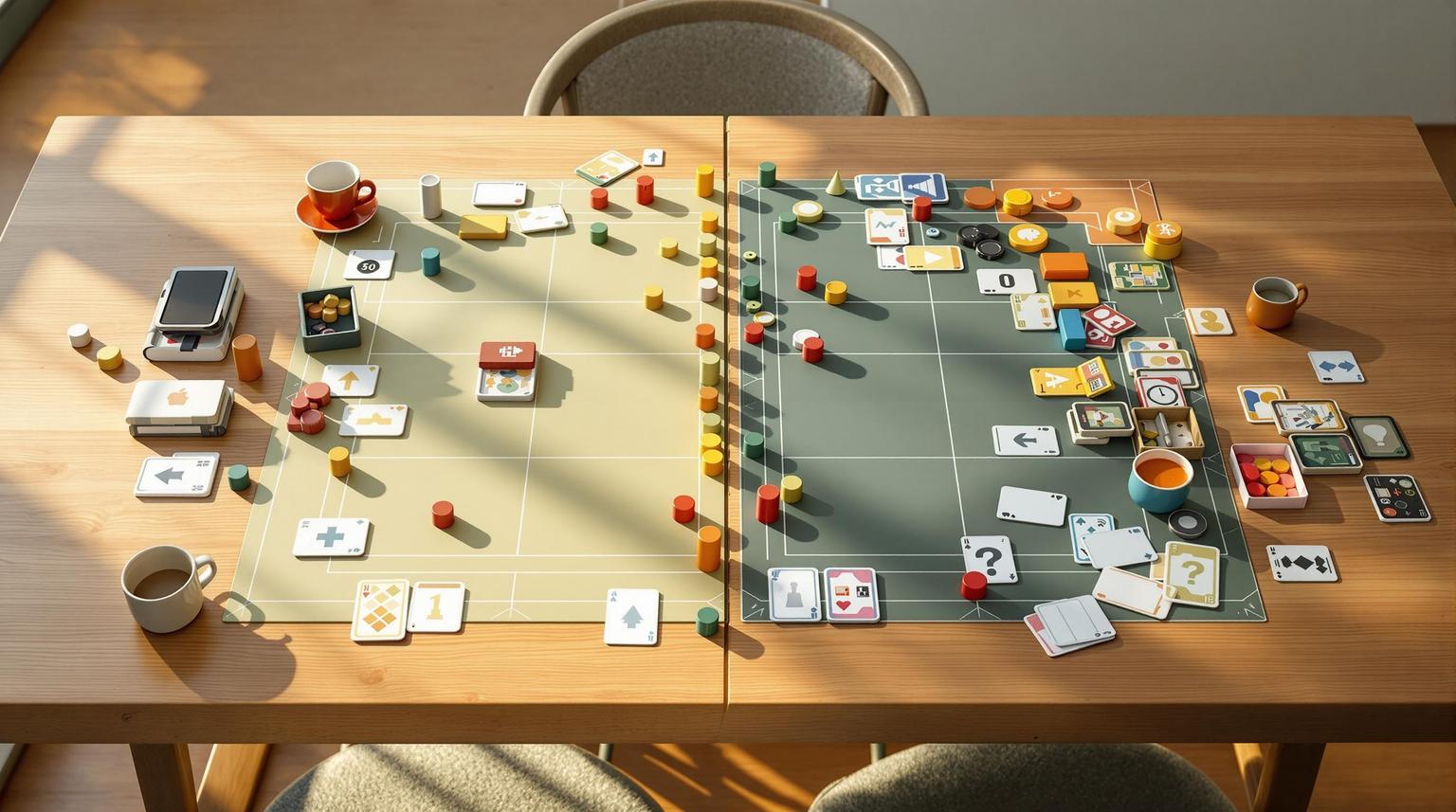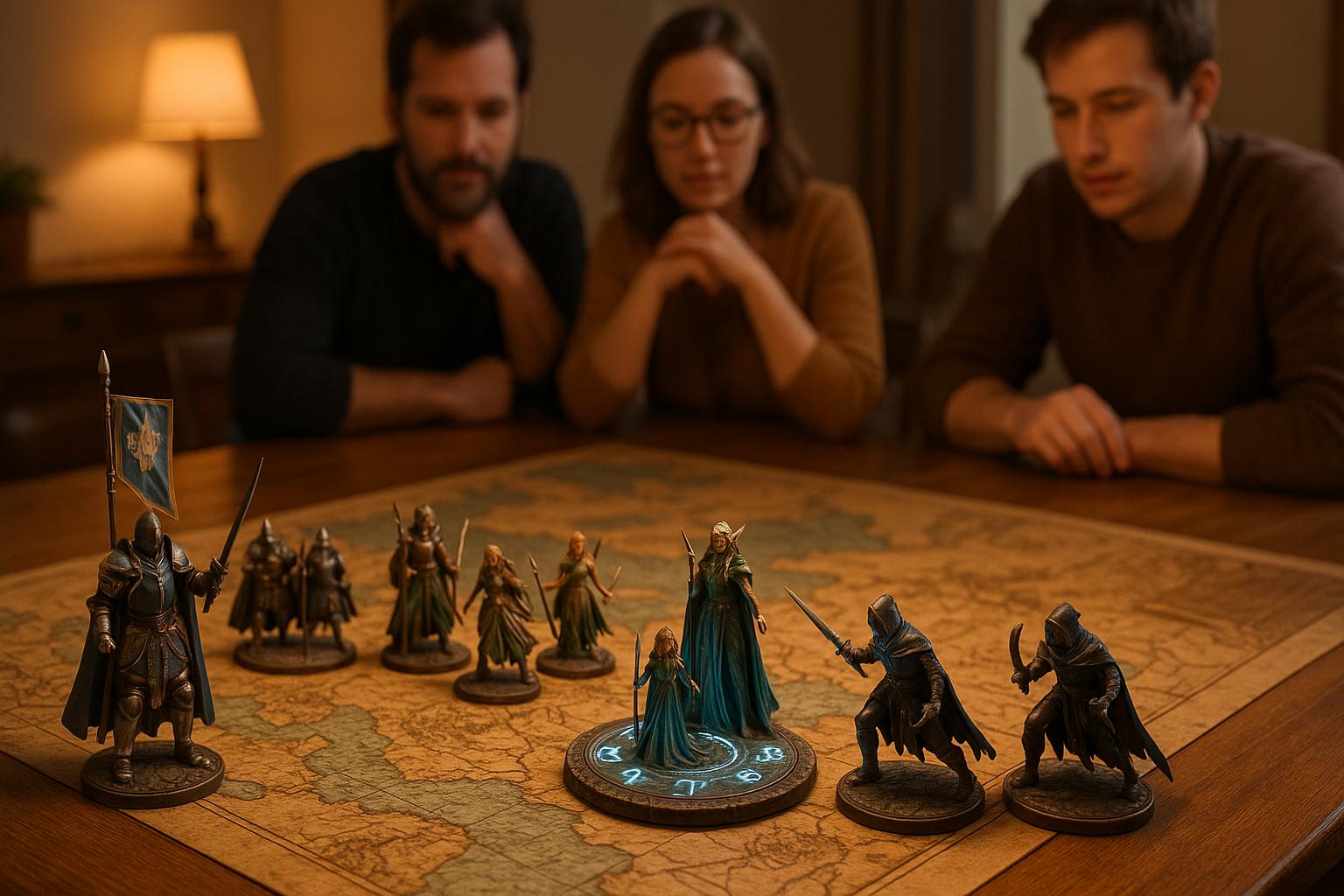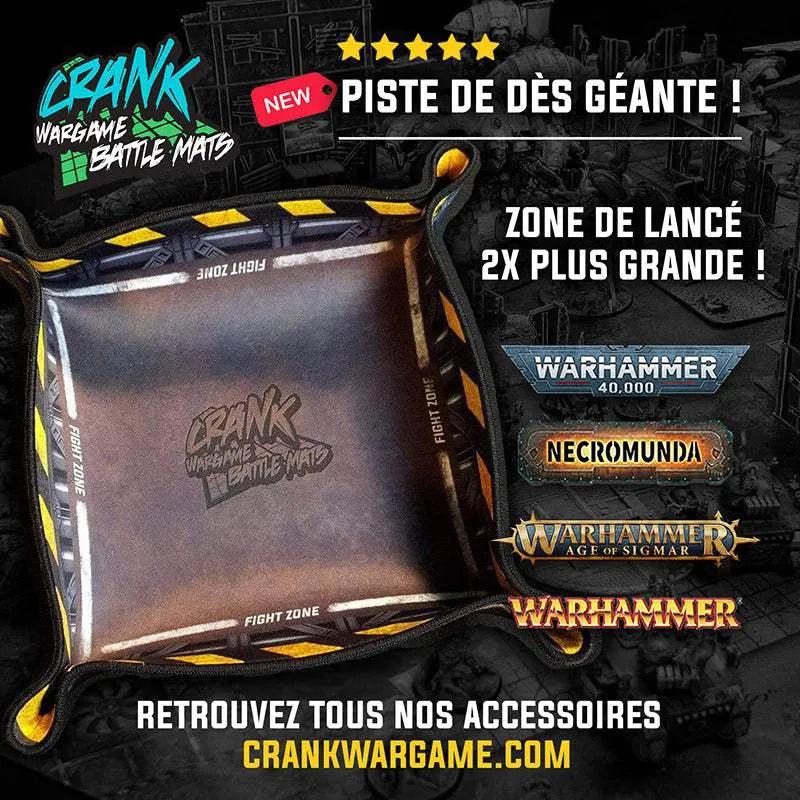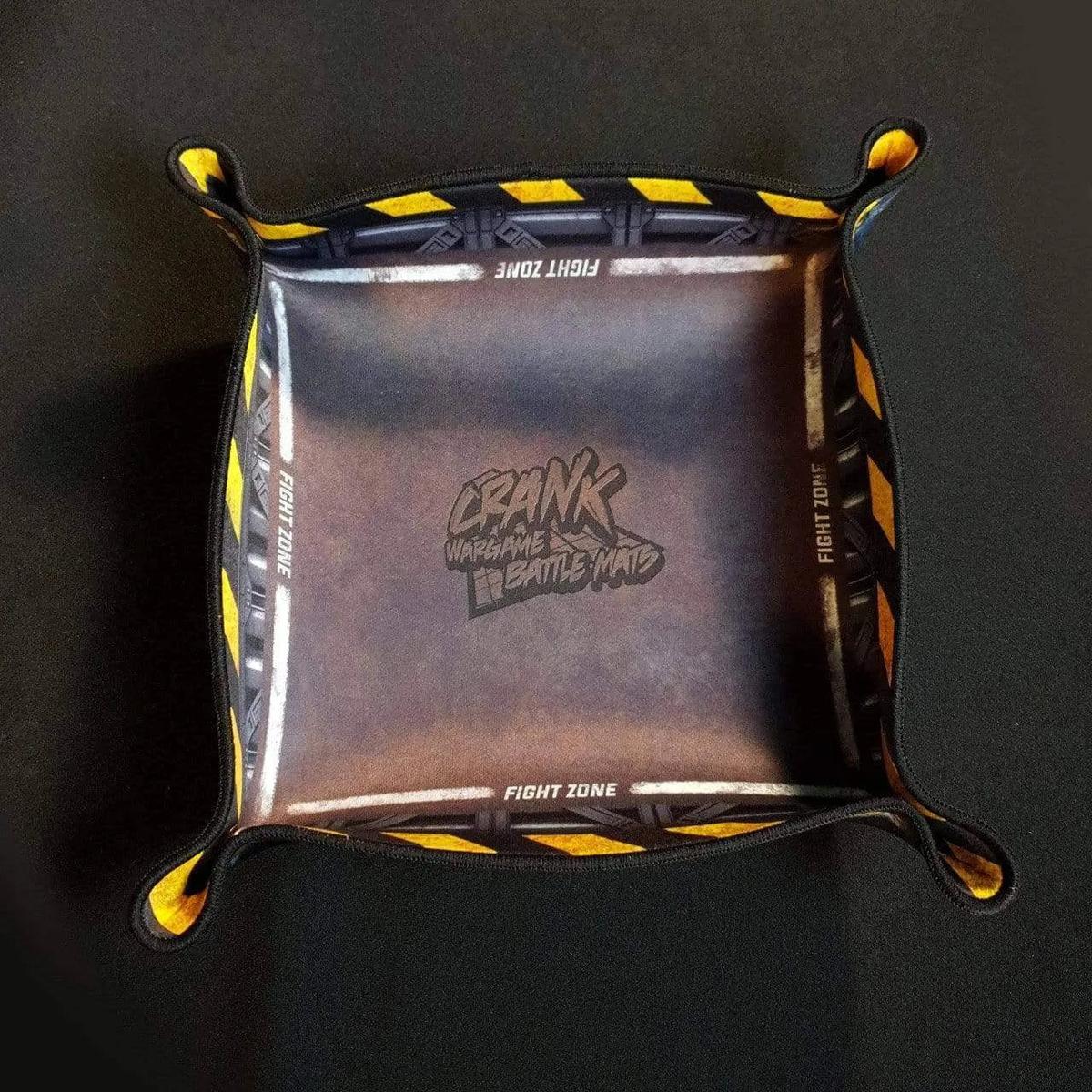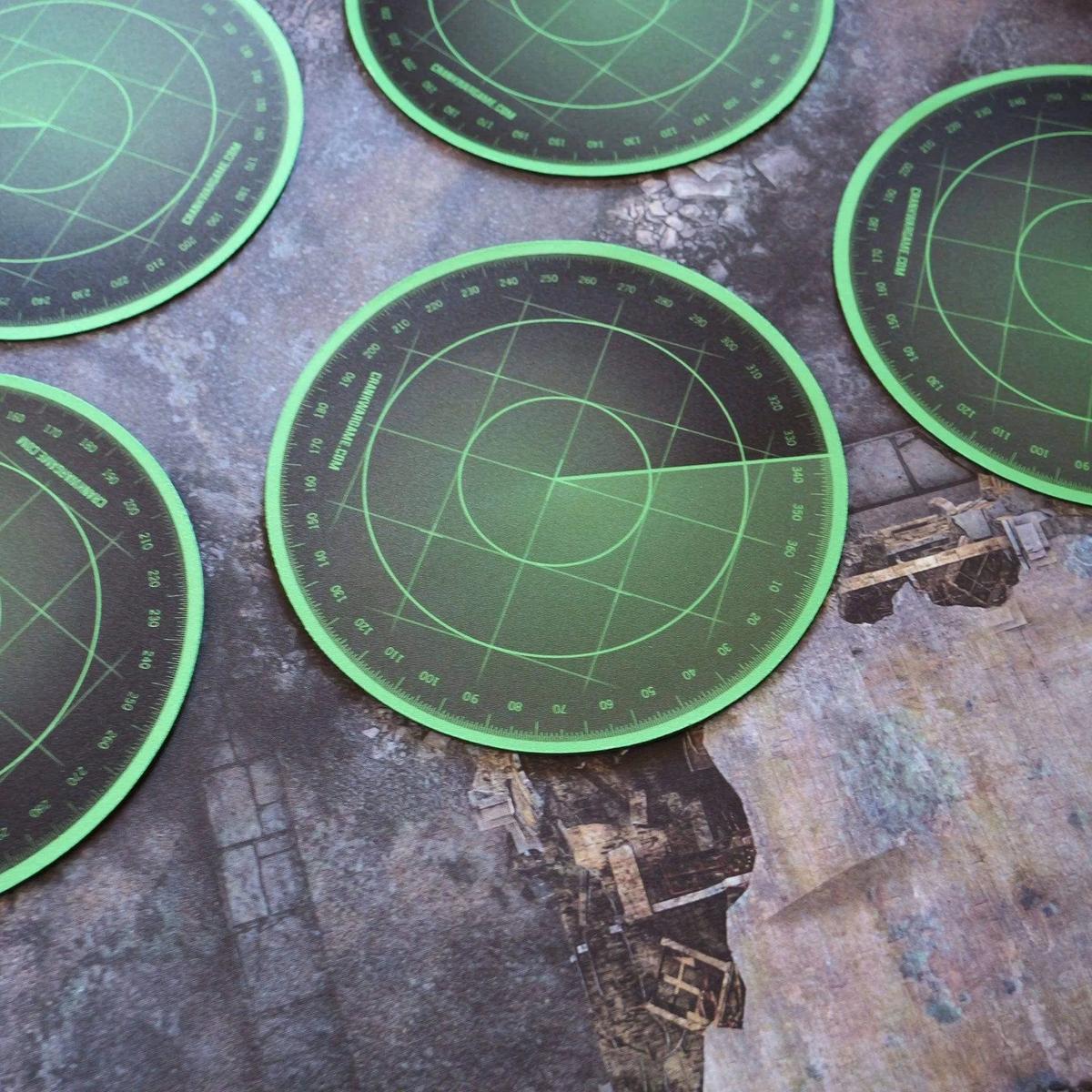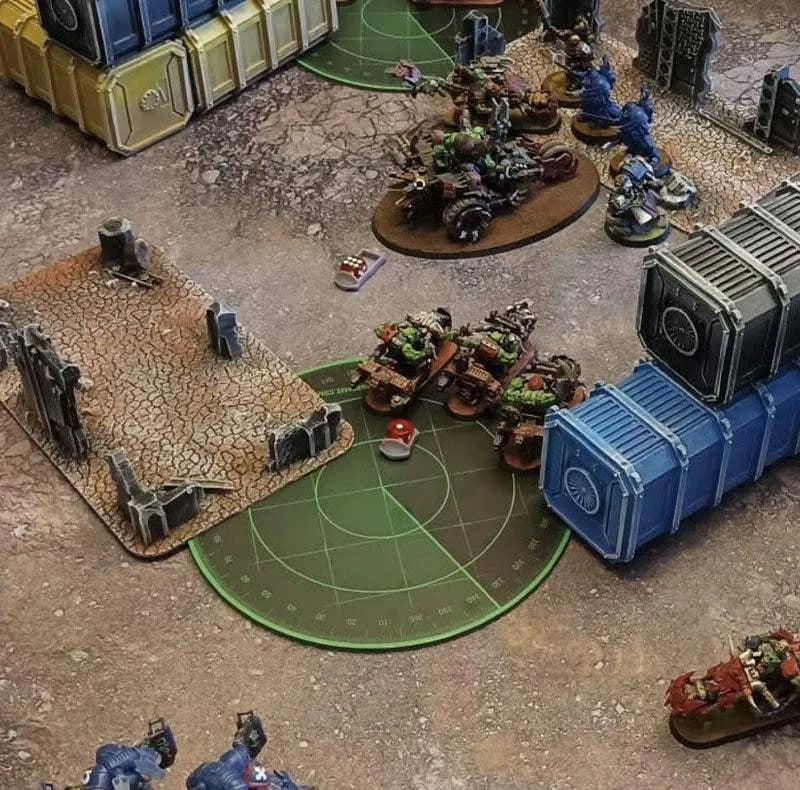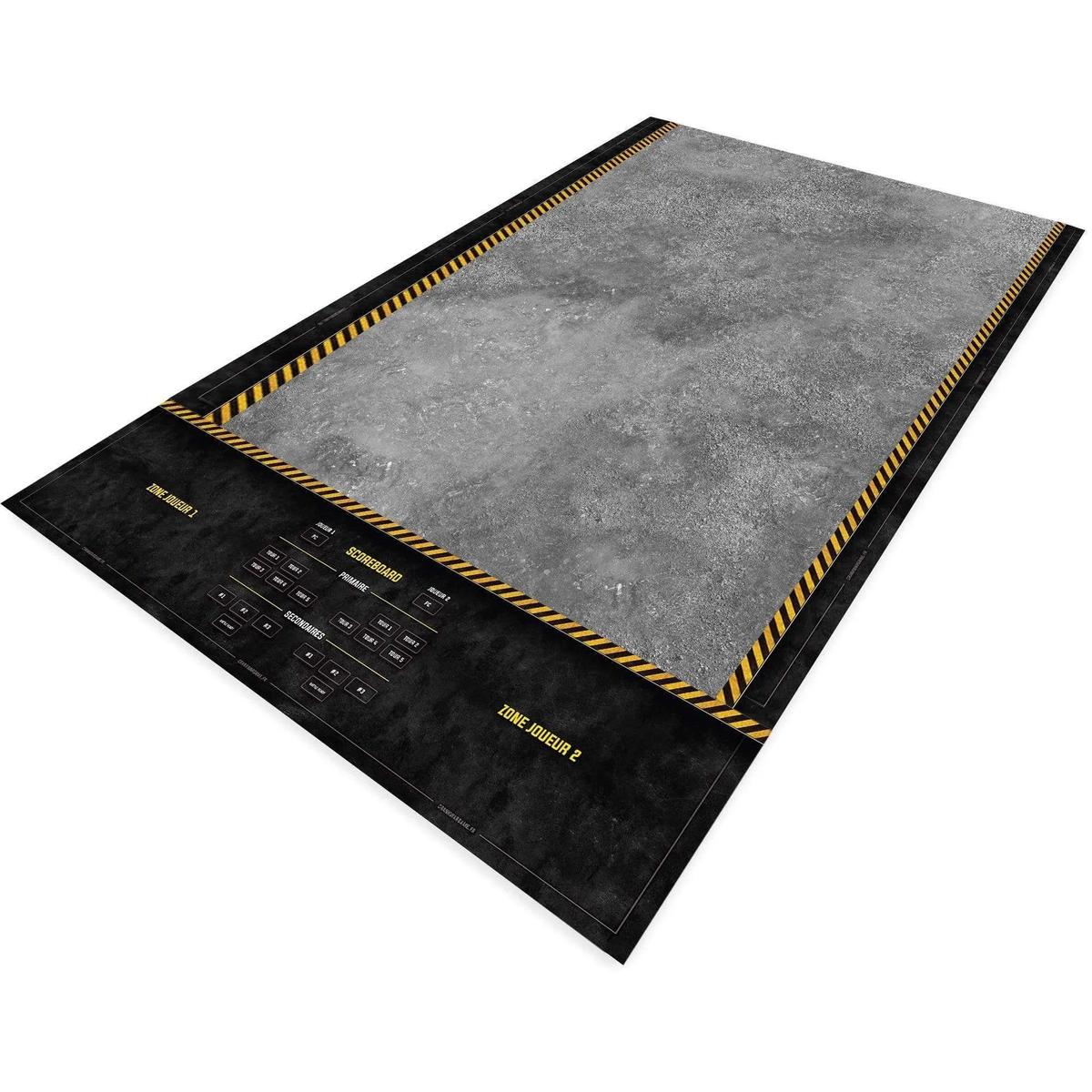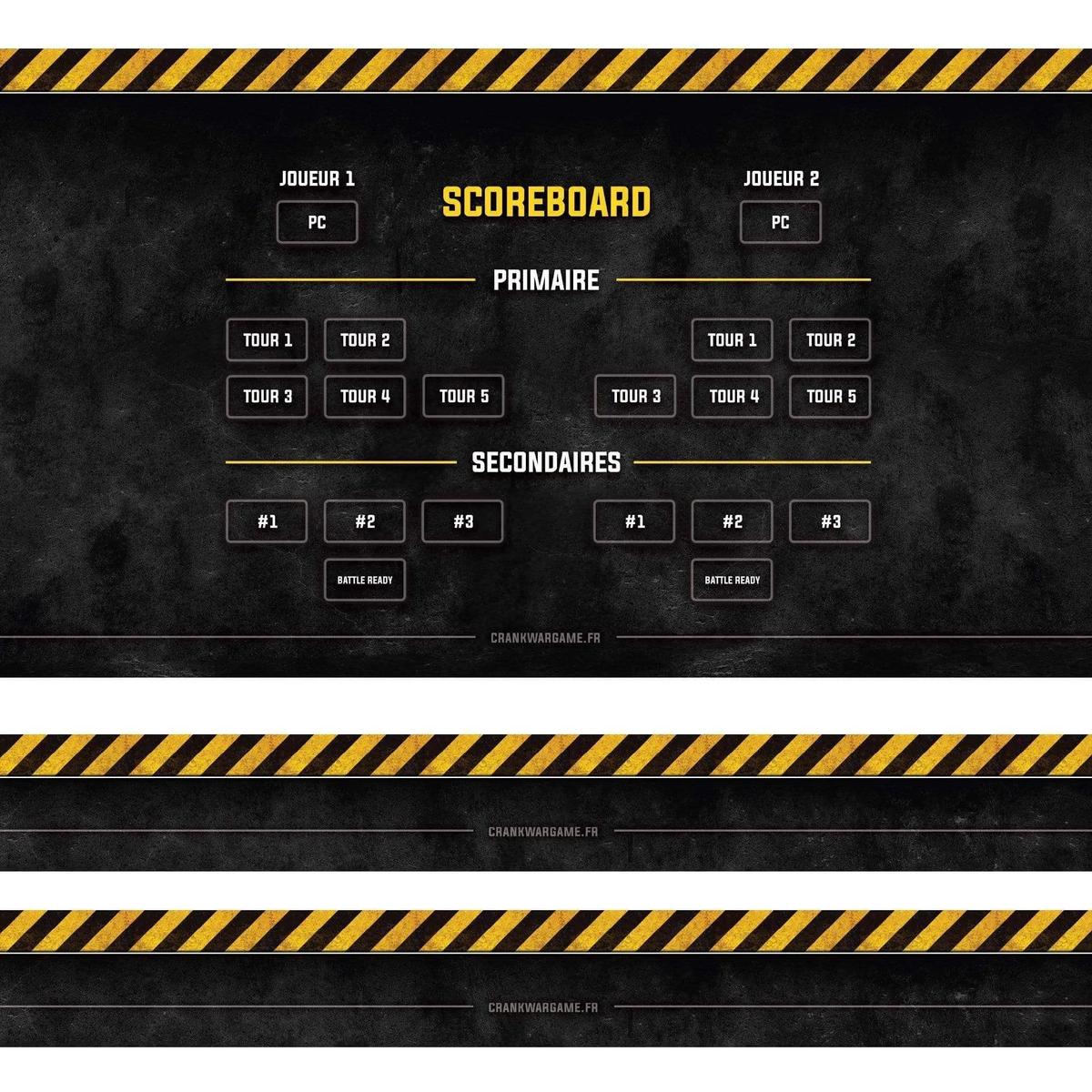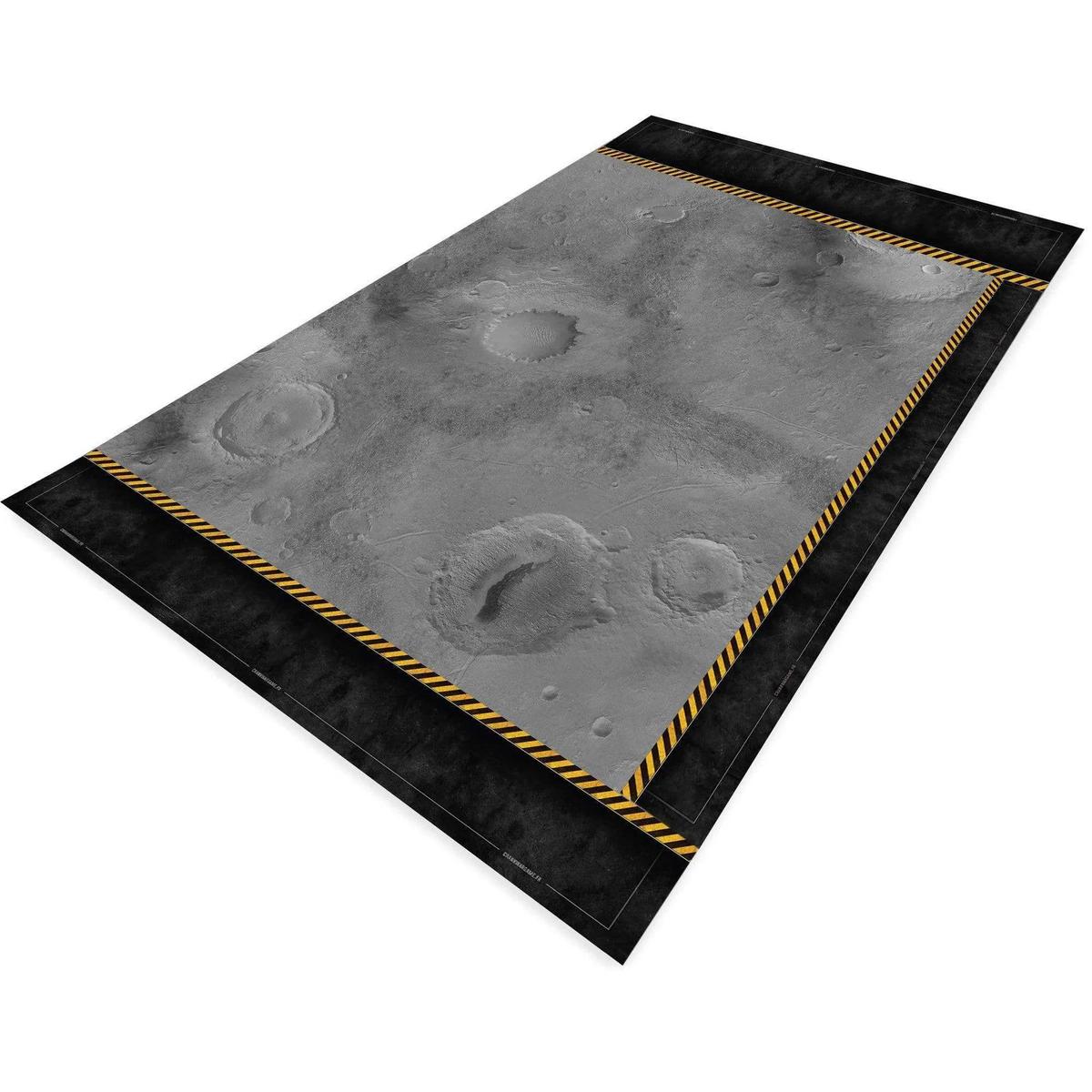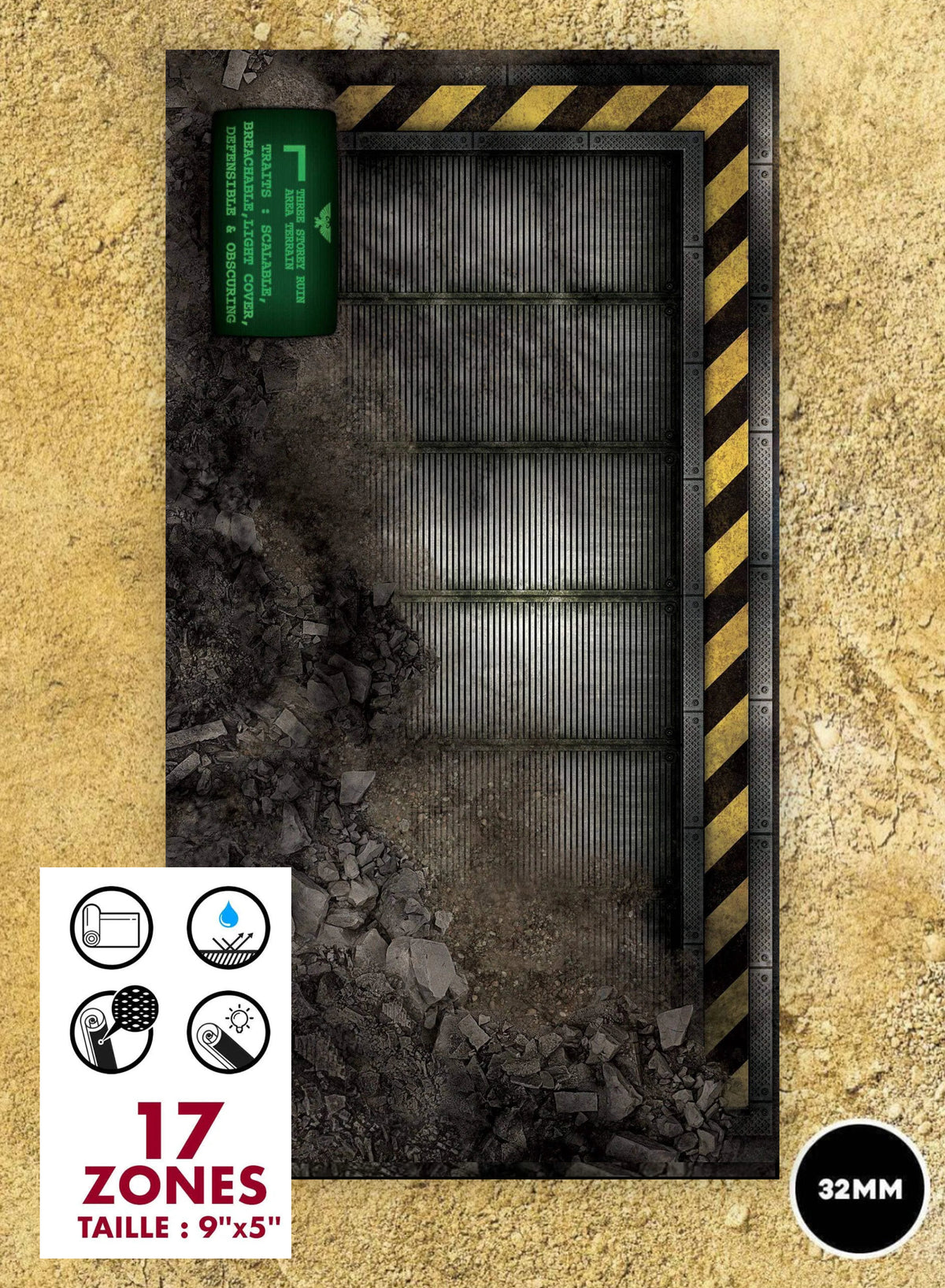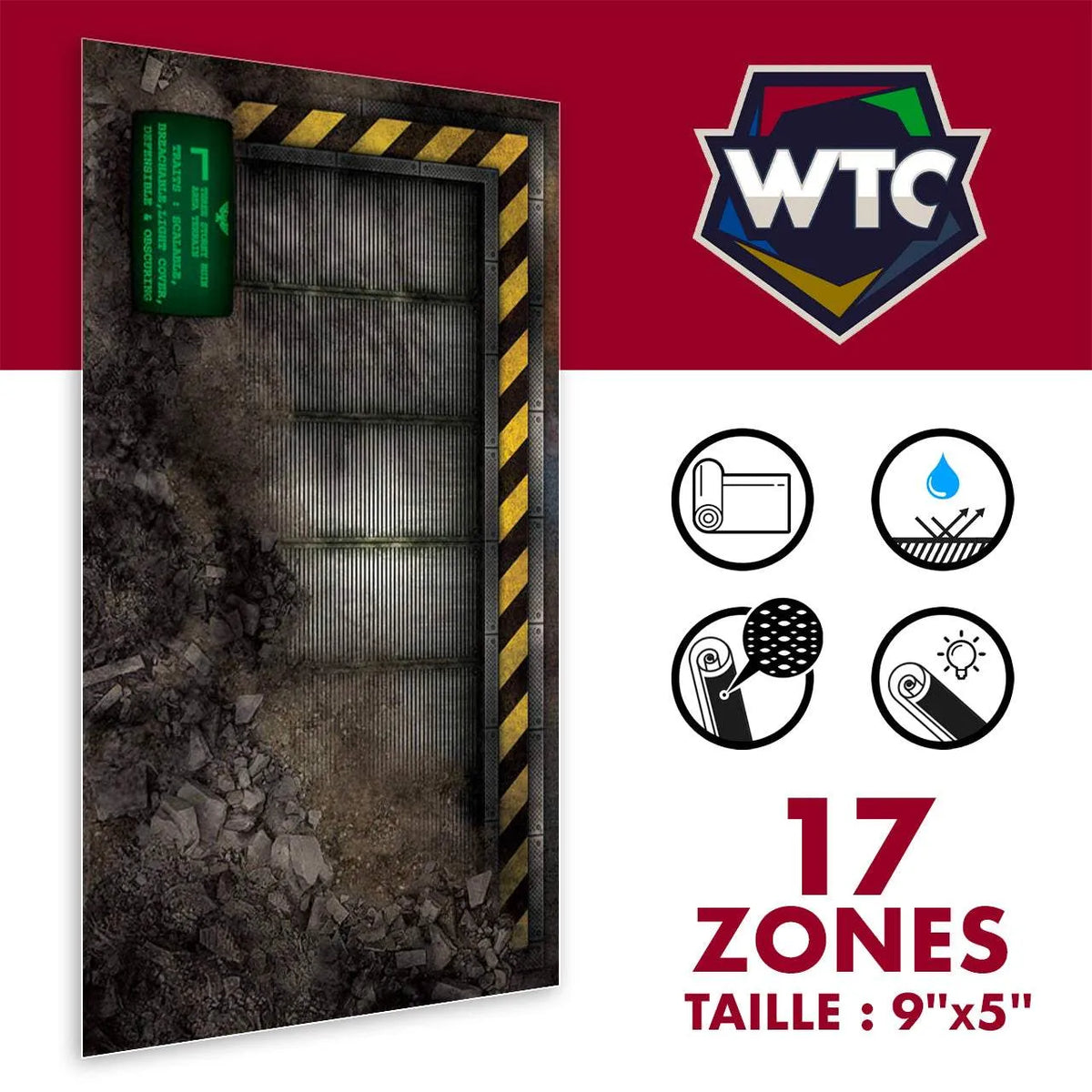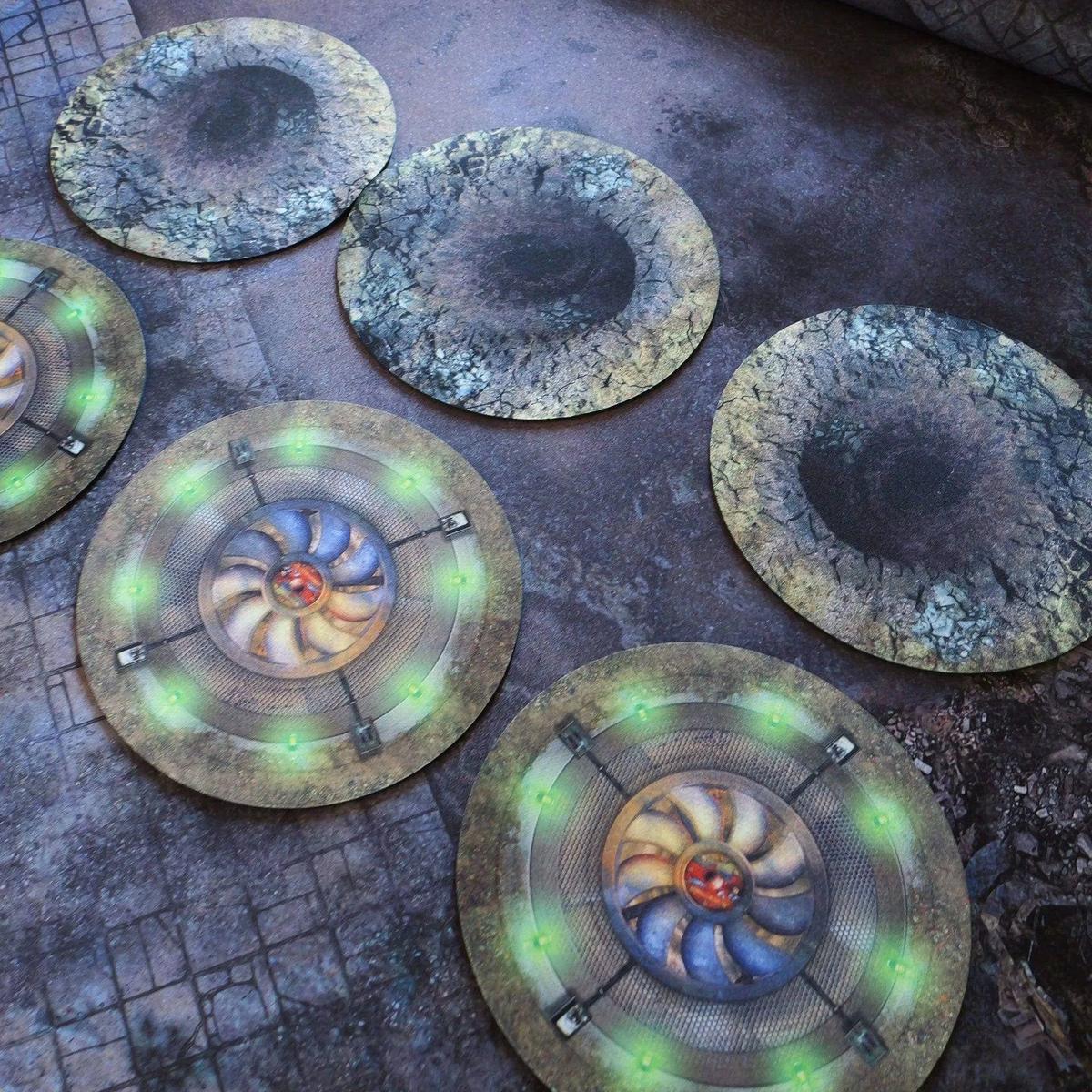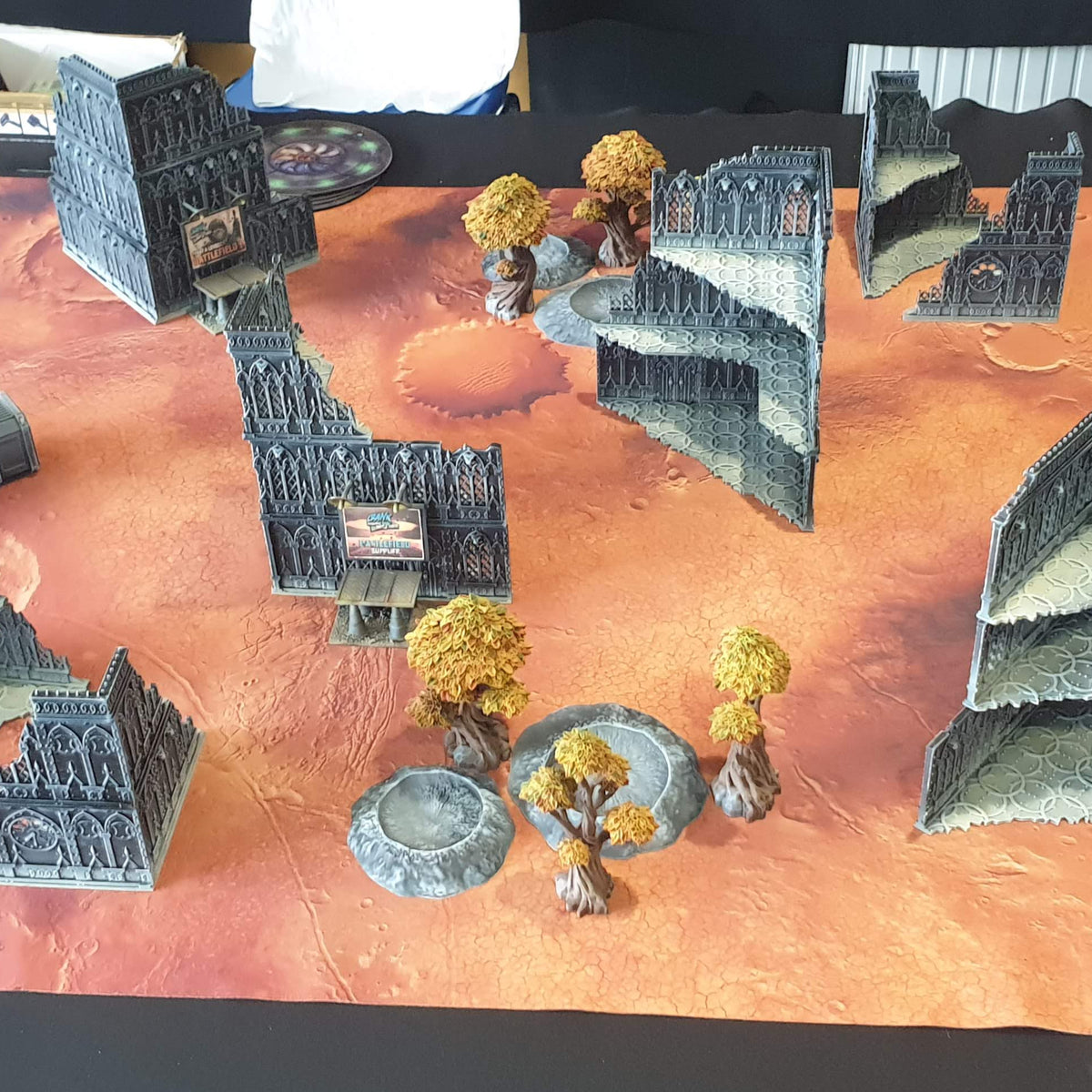The placement of objectives in a board game or wargame is crucial to creating a compelling and strategic experience. Here are the key points to remember:
- Immersion and storytelling : Objectives must fit into the game world, such as an ammunition depot or a strategic point.
- Tactical Balance : Position objectives to provide interesting challenges without putting any player at a disadvantage.
- Using the game mat : Neoprene mats (e.g. Crank Wargame ) with detailed scenery enhance immersion and make it easier to position objectives.
- Strategic Zones : Place objectives in the center to encourage clashes, or in specific areas to vary strategies (offensive or defensive).
- Test and adjust : Try different configurations to ensure a good balance and an engaging experience.
In short, good objective placement turns a game into an immersive adventure, where every decision counts.
Warhammer 40,000 Learn to Play - The Complete Rules v10 in a Real-Life Situation. W40K
Basics of Goal Setting
Objective placement relies on a few key concepts that transform a game into an engaging experience. Each objective placed on the playmat must serve two purposes: provide a balanced tactical challenge while also enhancing immersion in the game's narrative. This dual dimension allows players to be fully invested, as their actions take on concrete meaning within the story they are experiencing. As Rob Pardo, VP of Game Design at Blizzard Entertainment , explains, "Players most enjoy games where they have a slight advantage while facing enough opposition to maintain tension." An objective that is too simple quickly becomes monotonous, while an excessive challenge can be discouraging. Balance is therefore crucial to maintaining interest throughout the game.
How Battle Mats Increase Immersion
To bring these principles to life, the gaming environment plays a fundamental role. Thematic battle mats , especially neoprene ones like those from Crank Wargame, are invaluable tools for successful objective placement. These mats provide natural visual cues that facilitate the intuitive positioning of objective markers, while creating harmony between them and the game setting. With a thickness of 3 to 4 mm, neoprene guarantees a stable surface where the markers stay in place, preventing accidental movement. In addition, its anti-slip and hydrophobic properties allow players to fully concentrate on their strategy without unnecessary distractions.
Placing an objective on a decorative element of the board, such as a printed ruin, immediately gives that objective strategic value. Players instinctively perceive the importance of this location, which increases their engagement while integrating the objective into the overall narrative.
Understanding Player Motivation and Engagement
Objective placement must also take into account different types of players. Some favor an immersive experience where each objective tells a story: a forgotten ammunition depot, a strategic communication point, or an ancient artifact provide context and enrich the narrative experience. For competitive players, the decision often comes down to a strategic choice: secure an easy objective or attempt a more complex challenge with greater rewards. By providing clear and varied objectives, placement directly influences player motivation while introducing welcome diversity, alternating between balanced scenarios and more asymmetrical situations.
Plan your goal placement
Strategy begins long before the first die rolls: each objective must be carefully planned to balance tactical challenge and fun. This preparation step transforms your playmat into a veritable battlefield where every choice matters.
Identify the key areas of your playmat
The center of the mat is often the heart of the action . This is where players converge, generating intense clashes. As Mezmorki, a Dakka veteran, points out:
“The objective of your game IS your game. That is, the objective of your game, or what determines victory and how points are awarded, establishes the basis for the tactical/strategic depth of the game.”
Placing a central goal encourages players to leave their comfort zone and actively engage.
Deployment zones also offer strategic opportunities. An objective placed in the enemy zone encourages an aggressive approach, while an objective in the starting zone favors a defensive posture.
Printed terrain features , such as ruins or craters, can serve as anchor points for your objectives. For example, Crank Wargame mats , with their HD neoprene prints, add a narrative dimension by transforming a simple marker into an immersive element of the game.
Finally, positioning objectives on elevated terrain can introduce an interesting dynamic. These positions offer tactical advantages, but at the cost of greater exposure, forcing players to carefully weigh risks and rewards.
Create fair but challenging goal positions
Avoid an overly even distribution of objectives, as this often reduces strategic choices. An asymmetrical layout, on the other hand, forces players to make difficult decisions and adapt their plans.
For armies focused on territorial control , place objectives centrally so they can accumulate points efficiently. Conversely, for mobile armies , spread objectives out to take advantage of their speed.
“I enjoy the missions in the current rulebook. I find the 'rush to the center' strikes a nice balance between early engagement and managing 'reserves' to retake/deny objectives later in the game” - greatbigtree, Junior Officer with Laspistol.
To increase the tension, place most objectives outside of covered areas. This forces units to expose themselves, creating moments where players must weigh whether the risk is worth the reward.
Test each location to ensure no objective is too easy or too difficult to achieve. Also, adjust the scoring incrementally to maintain interest throughout the game. The idea is to create compelling dilemmas, where players ask themselves, "Do I take the risk for this objective?" By following these principles, you'll be able to optimally position your objectives for a balanced and engaging gameplay experience.
Step-by-step process for goal placement
Transform your playmat into a truly immersive stage. Each objective should have a story and fit seamlessly into the game world. Here's how to bring your games to life.
Step 1: Give a narrative dimension to the objectives
Immersion begins with a strong connection between your objectives and the game world. In Warhammer 40K , an objective shouldn't be a simple, neutral marker. It must become a meaningful narrative element, like a vital power generator, an ancient relic, or a crucial strategic point. For example, instead of simply saying "control objective 3," describe it as "secure the plasma generator that powers the hive city's defenses." This type of storytelling enriches the gameplay experience and gives players' actions meaning.
Once this story is in place, it is time to choose markers that reflect this context.
Step 2: Select suitable markers
The choice of markers plays a key role in the visual and strategic experience. As Dean Sinnbeck of Bell of Lost Souls pointed out:
“Proper 40K objective placement is a skill every player must master.”
Well-chosen thematic markers help clarify distances and enhance immersion. For example, playmats with HD prints and double-sided designs offer interesting flexibility. Use an "Imperial City" setting for urban missions, or opt for a "Devastated World" for more apocalyptic battles. These markers not only serve to mark areas, but can also be used to manipulate the enemy's strategy, as bait or denial zones, pushing the enemy to make risky decisions.
Step 3: Test and adjust your configuration
Once you've placed your objectives and chosen your markers, it's essential to test the setup to ensure a good balance. Make sure each objective is clearly visible and accessible, while avoiding frustrating imbalances related to lines of sight or movement paths. Observe players' strategies and adjust as needed.
To refine your setup, gather feedback through surveys or informal discussions about the difficulty and balance of positions. Don't hesitate to test your scenarios with different groups: an ideal placement for experienced players might be too complex for beginners. Adjust iteratively to design a game environment that is both challenging and balanced.
Maintain game balance and realism
Once you've defined your objectives for immersing players in the universe, it's essential to keep tactical balance and scenario realism in mind. Achieving perfect balance may seem utopian. Some experts even argue that balance is merely an illusion, and that controlled chaos better reflects the complexity of real-life conflicts. This paves the way for unpredictable tactical scenarios , where rigid symmetry gives way to more nuanced strategic choices. In this context, player skill can often compensate for an initially unbalanced board.
Balanced or asymmetrical investment: which choice should you choose?
Opting for asymmetrical positioning can offer particularly interesting game dynamics. For example, in an offensive strategy, placing an objective in the heart of the enemy's territory can disrupt their defense and force them to react. An ideal configuration might allow you to attack one enemy objective while simultaneously defending two other points. This kind of calculated imbalance can add additional depth to the game.
Taking into account the specificities of the armies
Once the placement principles have been defined, it is important to adjust them according to the particularities of each army. For "horde" type armies, it is advisable to avoid positioning the last objective too close to the borders, in order to limit the summoning of units. This type of adaptation reinforces immersion and tactical coherence.
Wargame rules must also remain accessible while maintaining a certain authenticity. They must allow for the extraction of useful lessons, particularly in military contexts. To achieve this, designers must simplify essential elements into understandable game mechanics. For example, a squad scenario will require specific objectives, while a regimental-scale battle may require broader placements. The challenge is to find a balance between realism and playability, placing players in the shoes of a commander facing strategic decisions where advantages and risks coexist. Because, ultimately, a game that is too realistic but unplayable loses all its appeal.
Maintain immersion and avoid conflict
To maintain narrative immersion throughout the game, it's a good idea to pre-measure distances and validate the measurements with your opponent. This helps avoid disagreements while ensuring a smooth and enjoyable gaming experience.
Finally, to optimize your games and enhance immersion, consider investing in a quality playmat , like those offered by Crank Wargame Playmats for the Warhammer 40k and Age of Sigmar universe .
sbb-itb-9f5a185
Conclusion: Key Points for Better Goal Setting
Proper objective placement is essential to delivering an immersive and balanced gaming experience. Experts agree that defining clear objectives is important to guide player tactics and increase engagement.
Finding the right balance between realism and playability is crucial to maintaining player interest. A well-designed game allows participants to explore different tactical approaches while developing their own strategies. Player enjoyment must remain a top priority, as it directly influences the overall impact of the experience. This tactical balance takes on even greater meaning when supported by a captivating narrative.
Each objective must fit seamlessly into the game world, contributing significantly to the story's unfolding. Thoughtful storytelling can transform a simple game mechanic into a powerful immersion engine.
Regular testing and constant adjustments to objective placements help refine the gameplay experience. By gathering player feedback and improving mechanics through cycles of iterations, it becomes possible to correct imbalances and optimize engagement. These adjustments ensure a seamless gameplay experience, with an endgame as satisfying as its flow.
To get the most out of your games, investing in quality equipment can make all the difference. For example, the high-end gaming mats offered by Crank Wargame, Warhammer 40k and Age of Sigmar gaming mats , provide optimal battlefield visualization and allow for precise measurements. These professional accessories transform your games into truly immersive adventures, while showcasing your miniatures.
The ultimate goal remains to reward the player's efforts in a rewarding way. Well-thought-out objective placement directly contributes to this achievement, keeping participants coming back for more challenging and fun games.
FAQs
How to ensure that lens placement remains balanced in an asymmetrical setup?
Ensure balanced placement of objectives
To maintain balance in an asymmetrical setup, it's crucial to assess the strengths and weaknesses of the players involved. By adjusting the position of objectives, you can compensate for potential disadvantages and incorporate elements like secondary objectives or contextual bonuses . These additions promote a more balanced interaction and boost engagement for all participants.
Regular testing of your setups also plays a key role. This allows you to fine-tune your settings and ensure that every player feels fully engaged in the game. At the same time, using immersive gaming mats , such as those offered by Crank Wargame , can not only add a touch of realism, but also contribute to greater fairness in the running of games.
How do neoprene playmats improve immersion in wargames and board games?
Neoprene playmats: an asset for your games
Neoprene gaming mats add a new dimension to wargames and board games . Their soft, non-slip surface protects your miniatures while making it easier to move pieces, making each game smoother and more enjoyable. As a bonus, their durability means they can be used again and again, without showing signs of wear, even after many sessions.
But these mats aren't just about practicality. They also feature thoughtful thematic designs , designed to enhance immersion in the game world. These detailed visuals bring every scenario to life, whether it's epic battles or strategic campaigns. It's the perfect accessory to transform your games into even richer and more engaging experiences.
How to adjust objective placement to match player styles and strategies?
Adapting objective placement to play styles
To align objective placement with different player styles and strategies, it's essential to consider their preferences. For example, competitive players will favor objectives positioned to maximize points while minimizing risk. Conversely, players who enjoy exploring will prefer objectives located in areas that encourage interaction with the terrain or discover new opportunities.
For aggressive players, placing objectives in areas that favor direct confrontations can enrich their experience. Defensive or strategic players, on the other hand, will benefit from objectives located in protected locations or those offering clear tactical advantages. Adjusting objective placement to suit these styles not only improves immersion, but also makes each game more engaging and realistic for everyone involved.
